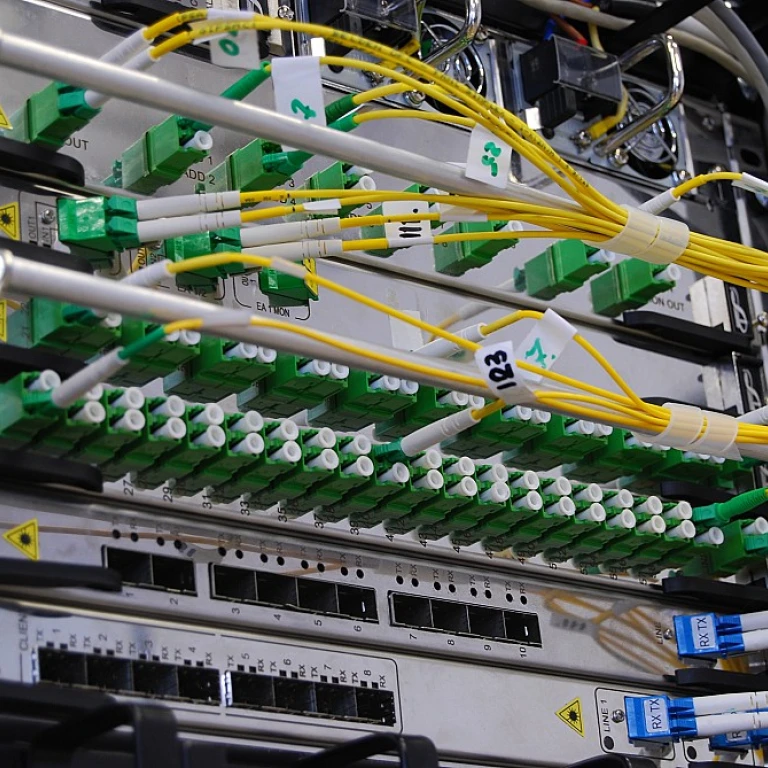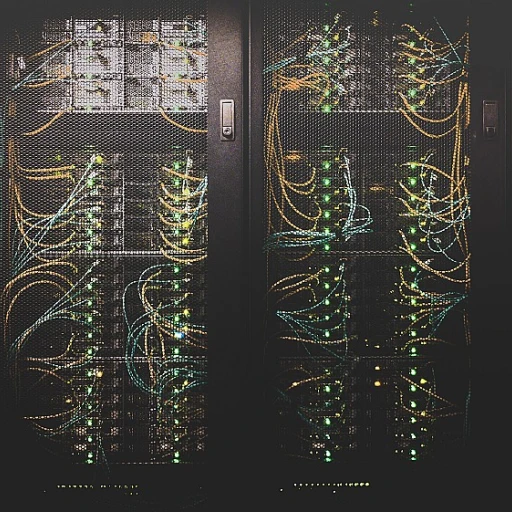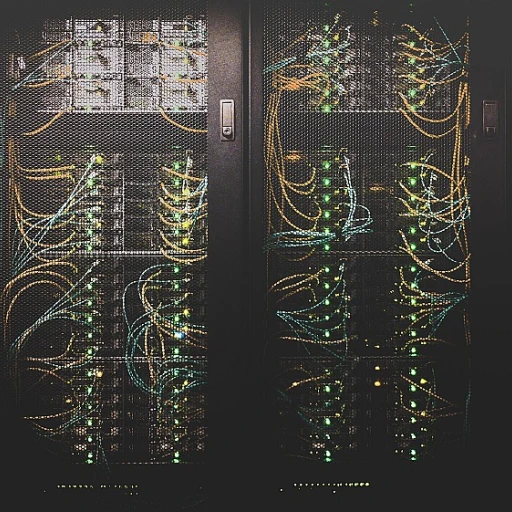Emerging Trends in Workplace Software
The Dynamic Shift in Software for Workplaces
The future work environment is undergoing a seismic shift, driven by the rapid advancements in technology and software development. From workforce management to automation, the impact of software on business processes is undeniable. The key trends that have emerged in workplace software are shaping how we approach jobs and tasks. With automation gradually taking over repetitive tasks, workers will need to adapt to new collaborative software to enhance productivity and efficiency.
In this evolving digital environment, several key trends are emerging:
- Automation is here to stay: Automation will continue to transform work processes, reducing time spent on routine tasks and allowing workers to focus on higher-value activities.
- Remote work on the rise: Remote work, once a necessity, has now become a preference for many. This shift has bolstered the use of remote work tools and collaborative platforms, allowing businesses to maintain continuity.
- The rise of personalized software: Software solutions are becoming increasingly tailored to individual business needs. Gone are the days of one-size-fits-all—companies now demand customizable solutions to address their unique challenges.
- Data-driven decision making: As data becomes an essential asset, businesses look to software that can intelligently parse data for better decision-making and strategic planning.
- Focus on employee experience: Software today not only considers business efficiency but also underscores the importance of enhancing employee experience and well-being in the workplace.
Adaptation to these trends is vital for businesses aiming for growth and sustainability in the future work environment. As companies evolve, they must leverage these innovations to stay competitive and capitalize on their workforce's skills efficiently.
AI and Machine Learning: Revolutionizing Work Processes
AI's Role in Reshaping Work
Artificial intelligence and machine learning are no longer just buzzwords; they're changing how we work. These technologies streamline tasks, allowing workers to focus on more complex problems. Imagine a future where AI handles repetitive tasks like data entry, freeing up time for creative and strategic work. This shift not only boosts productivity but also enhances job satisfaction.
Automation: A Double-Edged Sword
While automation will redefine many jobs, it also raises questions about the labor market. Will workers need to adapt to new roles, or will some jobs disappear altogether? According to the World Economic Forum, automation could displace certain jobs, but it also creates opportunities for new roles that require digital skills. Embracing these changes is crucial for both businesses and employees.
AI in Decision Making
AI is not just about doing tasks faster; it's about making smarter decisions. Businesses use AI to analyze vast amounts of data, providing insights that drive better decision-making. This capability is invaluable in advanced economies where data-driven strategies are key to staying competitive. As AI continues to evolve, its influence on decision-making processes will grow, shaping the future of work.
Real-World Example: AI in Workforce Management
Take workforce management software, for instance. AI helps predict staffing needs, ensuring businesses have the right people at the right time. This not only optimizes resources but also improves the employee experience by reducing overwork and stress. By integrating AI into workforce software, companies can better manage their teams, leading to a more efficient and satisfied workforce.
For more insights into how AI and machine learning are transforming software careers, check out this article.
Remote Work and Collaboration Tools
The world of work as we know it is changing, and with it, the ways we stay connected and productive. Remote work has stepped into the spotlight, and software tools are making sure we're not just floating but thriving. From keeping teams in sync across time zones to enabling seamless communication, the rise of remote technology is a game changer.
Keeping the Lines Open
You ever tried to brainstorm with your team when they're scattered across the globe? It ain't easy, but modern collaboration software makes it feel like everyone’s in the same room. Slack, Microsoft Teams, and Zoom have shattered distance barriers, letting people be just a click away from chats, calls, and meetings. The increase in remote work has pushed companies to elevate their digital communication tools, which help in minimizing ‘meeting fatigue’ and increase productivity. The right tools mean no matter where you are, you're always in touch and looped in with the latest.
Tools That Understand the Way You Work
Work styles differ, and software is adapting right alongside. From Kanban boards like Trello to project management giants like Asana, the digital workspace is flexible to fit how you get things done. More than ever, workers will see software that caters to variable needs, keeping productivity front and center.
Generative AI is getting in the mix too, predicting needs, automating routines, and freeing up time otherwise spent on mundane tasks. It's the kind of technology that not only makes life easier but anticipates what’s next, guiding decisions and priming you for future challenges.
The Human Touch Meets Technology
Despite the digital interface, these tools still leave room for human interaction. That's a big deal - feeling human when working remotely is crucial for maintaining morale and fostering team spirit. Video calls, virtual collaborations, and shared workspace platforms preserve that human connection that makes projects tick.
Companies investing in remote software aren’t just jumping on the bandwagon; they’re paving the way for a balanced work-life scenario that boosts job satisfaction. Remember how AI is driving decisions across industry sectors? Well, something like that is at play here, subtly enhancing employee experience while nudging productivity upward. For a deeper dive into how software is reshaping today's employee-centric approaches, checkout customer relationship management systems, which also focus on adapting to these employment trends.
Cybersecurity in the Evolving Work Landscape
Guarding the Gates: Cybersecurity's Role in Tomorrow's Work
In the future work environment, cybersecurity is more than just a buzzword; it's a necessity. As businesses continue to embrace digital transformation, the need to protect data and ensure safe work processes is critical. With more tasks being automated and more workers opting for remote work, the potential for cyber threats increases. According to the World Economic Forum, cybercrime costs are expected to reach $10.5 trillion annually by 2025, highlighting the urgency for robust cybersecurity measures.
From Reactive to Proactive: The Shift in Cybersecurity
Gone are the days when cybersecurity was about reacting to threats. Now, it's about predicting and preventing them. This shift is powered by advancements in artificial intelligence and machine learning, which allow businesses to analyze data patterns and identify potential threats before they become issues. This proactive approach not only protects the business but also builds trust with clients and employees, ensuring a safer work environment.
Empowering Workers with Cybersecurity Skills
As more people work remotely, the responsibility for cybersecurity extends beyond IT departments. Workers will need to be equipped with the skills to recognize and respond to potential threats. Training programs and management software that focus on cybersecurity awareness can empower employees to be the first line of defense. This not only enhances productivity but also ensures that the workforce is prepared for the challenges of the digital age.
Integrating Cybersecurity into Business Strategy
For businesses, cybersecurity is not just an IT issue; it's a strategic one. Companies that integrate cybersecurity into their business strategy will be better positioned to handle future challenges. This means investing in the right technology, such as advanced threat detection systems, and fostering a culture of security within the organization. By doing so, businesses can protect their assets, maintain productivity, and ensure a seamless employee experience.
As we look to the future, cybersecurity will continue to be a critical component of the work environment. By staying ahead of the curve, businesses can safeguard their operations and provide a secure and productive workplace for all.
The Role of Software in Enhancing Employee Well-being
Software's Role in Boosting Employee Well-being
In the hustle and bustle of today's work environment, the well-being of employees is more than just a buzzword. It's a vital part of a thriving business. As companies continue to integrate advanced technologies like AI and machine learning into their operations, the focus on employee experience is becoming a priority.
Why is this shift happening? Well, happy workers are productive workers. When people feel valued and supported, they perform better, and businesses see the benefits. Software solutions are stepping up to the plate, offering tools that not only streamline tasks but also promote a healthier work-life balance.
How Software Supports Well-being
- Flexible Work Arrangements: With the rise of remote work and hybrid models, software helps manage schedules, making it easier for employees to balance their personal and professional lives.
- Health and Wellness Programs: Apps and platforms are available that encourage physical activity, mental health support, and even mindfulness exercises, all accessible from a digital device.
- Feedback and Communication Tools: Regular check-ins and open communication channels, facilitated by software, ensure that employees feel heard and valued, boosting morale.
Real-World Examples
Consider a company like Buffer, which uses software to allow employees to work from anywhere, offering unlimited vacation time. This approach not only enhances productivity but also reduces burnout, leading to a happier, more engaged workforce.
Preparing for the Future
As the workplace continues to evolve, businesses must invest in software that prioritizes employee well-being. This investment isn't just about keeping up with trends; it's about building a resilient workforce ready to face future challenges. According to the World Economic Forum, businesses that focus on well-being are more likely to succeed in advanced economies.
In the end, the future of work isn't just about technology and automation. It's about people. And software is the bridge that connects these elements, creating an environment where employees thrive and businesses prosper.















